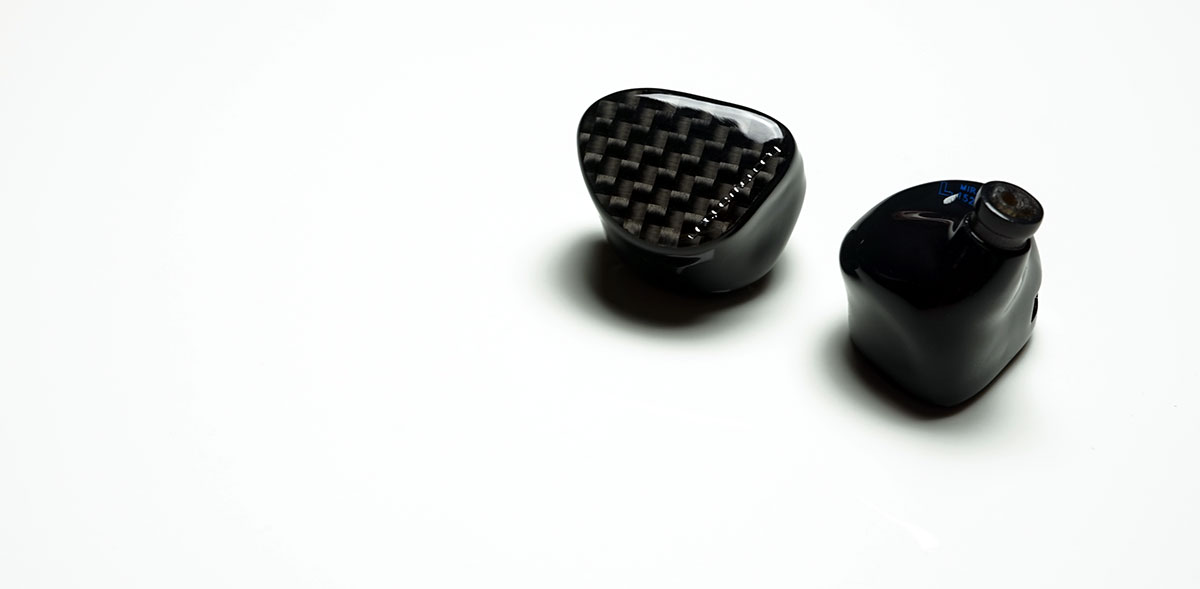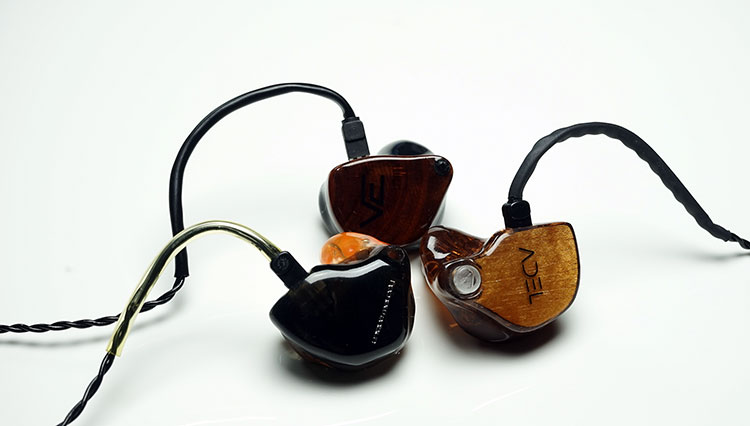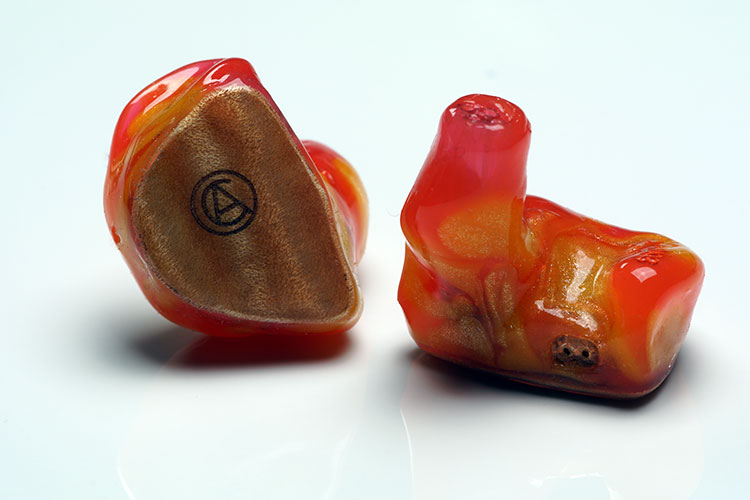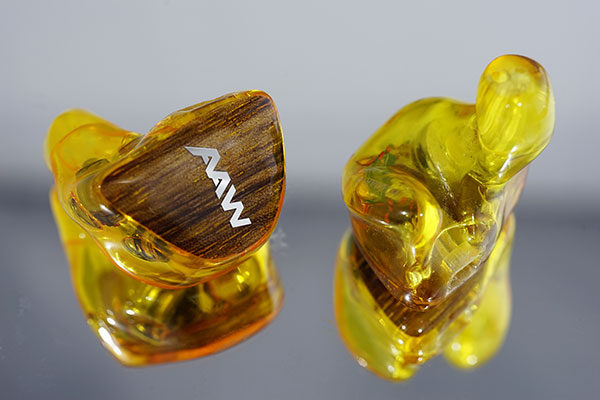Sound Impressions
Summary
Tonally the Miracle is relatively neutral with a clean response and overall it comes across as reasonably balanced. There is a fullness in the sub-bass response that gives some nice heft and a mildly elevated mid-bass with a hint of warmth for some impact when required.
he V2 mid-range has a slightly forward upper-mid and vocal presence and a sparkling 5-7k peak in the lower treble with plenty of controlled energy and decent extension though not huge overall.
The perspective is not a front-row seat performance but the Miracle doesn’t come across as particularly distant or laid back either. In fact, the Miracle presentation is lively, engaging and on the musical side but wisely stays away from extensive coloration to achieve that.
There is nothing lumbering or slow-paced about the Miracle 6 BA setup. Rather than take the slightly relaxed position of the Merlin hybrid the Miracle opts instead for a tighter and snappy presentation especially in vocal presence which helps considerably with its more engaging perspective. It does however sound slightly thinner than the Merlin’s richer and warmer tones.
Flexible
I actually found the Miracle’s tonal signature to be a very flexible performer and presentation-wise very coherent. It’s an in-ear monitor that will not sound out of place with quite a large range of genres.
It doesn’t quite have the vastness or separation to its soundstage to accurately convey the depth of orchestral works though and whilst imaging is excellent it’s not as holographic as the A12 from 64Audio and the VE6XC from Vision Ears.
It is great though for rock, pop, folk, acoustics, and some sub-genres of EDM where a huge mid-bass response is not required. Watch out for bad mixes with accentuated lower treble or bright recordings, the Miracle’s slight 5-7k peak can be a bit unforgiving in that respect.
Bass
The more I listen to the Miracle bass performance the more I like it. The level of low-end control on the Miracle is exactly how I want a $1k IEM to perform. The Miracle’s bass presentation has a largely neutral character with a hint of warmth, stays out of your face, and possesses excellent extension.
It also has a nice level of sub-bass fullness and texture without ever sounding sloppy, bloated, or slow. That touch of warmth to it also helps keep the Miracle bass relatively smooth and natural sounding though it does prevent the low end from sounding super-fast.
I am really glad the team at Unique Melody resisted rolling off the low end and not opting for all mid-bass with the Miracle. It makes a huge difference when sub-bass performance has presence and detail.
Take for instance the 64Audio V8 which is an 8 driver BA design that is a bass head favorite. It hits hard, no doubt, but the focus is primarily on a mid-bass response so it is tight and punchy, tighter than the Miracle low end but it doesn’t have the same reach and gravitas as the Miracle sub-bass performance nor the same level of detail.
Mids
Mids are pretty neutral on the Miracle with a very slightly elevated and more focused vocal presence and an energetic upper mid-range. The bass to mids transition is excellent avoiding any bass bleed and ensuring a clean separation.
Lower mid-range performance has good weight and body with a decent crunch in rhythm and bass guitar performance. Overall the mid-range has a very nice turn of pace, sacrificing a little lushness for articulation and clarity.
Vocals are natural sounding with little in the way of sibilance though I didn’t quite find them as smooth and resolving as the top performers such as the Adel A12. Just a slight thinness and lacking in texture but nevertheless very clear and in no way lost in the mix.
Instrumental separation and timbre are accurate but I found myself looking for a touch more space from time to time especially with hard rock. Possibly as a consequence of having a slightly more forward and energetic upper mid-range UM had to sacrifice a little depth to the staging and air.
Certainly, it’s one of the reasons why I don’t feel the Miracle has the same holographic feel to its staging as say the A12 which had excellent layering. However, it is superior and cleaner than something like the hybrid AAW W300AR CIEM which had a darker almost veiled mid-range with the stock Vitesse cable and almost no air beyond.
Treble
Those listening to UM CIEMs for a while will not be surprised that the Miracle has a bit of a peak in the lower treble around 5-7k. It is indeed slight forward and attention-grabbing.
On the flip side, decay is a little short so sibilance is reasonably well-controlled but it can get a tiny bit hot on heavy percussion work if the original recordings are bright, to begin with.
It is a fine line between ensuring the upper mid-range and lower treble having energy and sounding peaky but I think UM just about got it under control. Treble articulation is excellent though with a nice clean response and plenty of detail.
There isn’t a significant roll-off in the upper treble either, perhaps a little dip with a minor upper octave or high treble sparkle peak but nothing significant. The major focus is definitely lower down in the treble profile and as such I would say the Miracle is not hugely forgiving of crappy recordings.
Synergy
The Miracle is rated at 16 ohms and 114DB SNR so it doesn’t need any amping to get off the ground and sound good.
Having said that I did feel with better sources and efficient amps the performance of the Miracle did tighten up so I would not advocate sticking this in your smartphone as your first choice. You will get volume, it will sound pretty good but not optimally good, not outstandingly good.
The BB Passport had no problems driving the Miracle to around 7/10 but it sounded a little congested and lacking in fine detail and a little less definition in bass performance.
Things changed considerably with the X7 AM2 module setup with a cleaner blacker background and a tighter bass response. Tonality is further refined with a better vocal presence when switching further up with Lotoo Paw Gold.
I would recommend using either a very controlled and detailed source like a Lotoo Paw Gold or AK380 or instead of a warmer amp such as the Picollo analog from Cypher Labs and the Vorzuge VorzAMP Duo.
Avoid higher powered or high resistance neutral to bright amps to reduce noise as well as to avoid any emphasis on the lower treble energy. The Miracle is not an IEM to go easy on bad or bright recordings.
Select Comparisons
A thousand bucks is merely a resting point in audiophile fiscal sensibilities these days with the summit way over $2k right now. Six drivers were as stuffed as it could get 5-6 years ago but now we have 12 or even 14 drivers. Time does not stand still especially in the in-ear monitor sector.
Yup, a driver count should not be the final word in terms of high fidelity. Not all huge driver configs sound as satisfying as those right below them but you have to admit it’s a marketing man’s dream if you have a ton of drivers.
Whipping out a few to compare to the Miracle really came down to those that were priced in roughly the same range regardless of drivers. That brought out a lot of variety.
UM Merlins
Build & Tech
My first ever custom in-ear monitor in orange and black (our site colors also) came with the original old Asian packaging unfit for portability by today’s standards. The Merlin is a very competitive starting price of $879 so slightly cheaper than the Miracle and considered the “fun” unit in the range.
The Miracle packs an all BA 6 driver setup but what makes the UM Merlin unique in the UM line-up is the hybrid dynamic driver and 4 BA design. That’s a single dynamic driver for the lows and 2 BA for the mids and 2 for the highs.
Design and build wise the Merlin does sport a bass port to allow the dynamic driver to breathe so in terms of absolute isolation it’s not going to beat out the Miracle which has no such ports.
At the time the instructions were an open fit so my own Merlin is a slightly relaxed sit with a shortish nozzle but other than that it fits very well indeed with that same level of quality build as the Miracle. Cables and accessories are also pretty much the same.
Tonality
Tonally the Merlins are very different from the Miracle except that both share a common peak (UM house sound) at the 5-7k area. Mind you Merlin’s peak is far less pronounced and noticeable given the star of the show is the bass performance and the vast soundstage the dynamic driver is able to produce.
The Miracle is the brighter of the two with the Merlin being more laid back and warmer. The Merlins mid and treble performance has plenty of detail but less energy in comparison to the Miracle and vocals are not as forward as the Miracle.
Bass and sub-bass, in particular, is vast on the Merlins and one of the best I have heard to date, reminding me of a mini LCD-2. Whilst I really enjoy the sub-bass extension of the Miracles the Merlins do it a shade better and with more texture. It’s not as tight though as the Merlin overall and not as balanced and if you enjoy sparkle and energy up top it won’t give you it.
Switching to Twag or a silver cable has become the norm for most Merlin users as the stock cable can leave things sounding veiled. Swapping brings a bit more pop in the mid-range and dials back the fuzziness for a cleaner tighter response to the Merlin.
In much the same way the Miracle benefits from a changeup also in cables with a bit more focus on the mids and air in the treble performance. Pick the Merlin for soundstage and bass performance, pick the Miracle for mid-range and treble energy. I can live happily with the two side by side, they do complement each other.
Custom Harmony 8
Build & Tech
It is yet another beautiful design but this time Custom Arts Harmony 8 is built with silicone and it’s by the far the comfiest fit in customs I have tried yet. It is also one of the few silicone-made 8 BA driver in-ear monitors out there in the market with 2 lows, 2 mids, and 2 highs.
The Harmony 8 is priced at around the $1k mark also and cheaper if you are outside Europe with the VAT shaved off.
Accessories
Accessories though are reasonably similar with a black braided cable that’s pliant and easy to manage. The Custom Art cable though feels a little lighter and softer than the UM Miracle cable and has a more premium plastic molded y -split and chin adjuster compared to the Miracle’s plastic tubes.
Both are terminated for 2 pin cable connectors and offer plenty of tuning adjustments with aftermarket cables. Package wise it comes in a standard smoked 1010 Pelican case which has plenty of room compared to the rounded slightly smaller pillbox case of the UM Miracle.
Tonality
Tonally the Harmony 8 is a little bit more laid back than the Miracle and not as bright with a slightly warmish tone and a fuller body to the note. Bass on the Harmony 8 doesn’t quite have the low-end reach of the Miracle and it’s a bit softer in the attack.
I never felt the Harmony 8 was a bass head CIEM, to begin with, but certainly, the Miracle hits a little harder in the low end with better sub-bass presence.
Vocals and the mid-range on the Harmony 8 are fuller sounding with a little more texture and detail than the Miracle though the Miracle is the speedier and cleaner of the two. Treble performance on the Harmony 8 is far more relaxed than the Miracle with a smoother less energetic lower treble range.
It’s a more forgiving CIEM than the Miracle but doesn’t seem to have that same sense of articulation, sparkle, and extension as a result.
Certainly, the Miracle feels a lot more energetic, cleaner, and more neutral than the Harmony 8. Both are detailed but the slightly more strident nature of the Miracle will make you feel you are hearing more detail when it’s just more forward sounding.
The Harmony 8 is a touch harder to drive also than the Miracle. I do love the Harmony 8 for hard rock but the Miracle seems to be just a bit more engaging overall.
AAW W300AR
Build & Tech
The AAW W300AR hails from Singapore and is priced around $899SG upwards depending on your options so slightly cheaper than the UM Miracle. But it does have fewer drivers than the Miracle and is a hybrid design.
The W300AR deploys a 3 driver setup comprising of a W100 Reference Proprietary 9mm Dynamic Driver for the bass frequencies and two Balanced Armature Drivers, one each for the mids and treble frequencies. It’s one in the eye for mister marketing man and the driver count equals excellence theory.
The build is excellent also though the faceplate is a little close to the top than the UM Miracles carbon fiber insert but otherwise very smooth, bubble-free and the color combination is very complimentary.
The Cable
This is a big difference between the W300AR and the Miracle. The stock cable of the W300AR is of very high quality and leaps and bounds ahead of the other black braided stock cables including the Miracle’s own cable.
This is a 46″ Null Audio Vitesse Cable (4 Braid Detachable) worth SG$249 alone. It is wonderfully pliant and soft and very easy to work with and terminated with an excellent and very sturdy Null Audio SC3 in-house 3.5mm jack. It’s a quality copper cable alright, except it does not work with the W300R’s tonal response. Null is very close to AAW, ironic eh?
Tonality
Tonally the W300AR is also on the warmer side compared to the Miracle but slightly brighter than the Harmony 8. Its main calling card is its excellent and very smooth vocal performance which sounds a bit more refined and fuller than the Miracle.
Treble on the W300AR is a little laid back in comparison to the Miracle with less sparkle but avoids any peaking in the lower treble making it a bit more forgiving than the Miracle.
Bass performance on the W300AR does not go as deep as the Miracle and there are less sub-bass presence and speed but it has a nice natural tone to it due to the dynamic driver hybrid design. The detail is very good actually on the W300AR but a step behind the 6 driver design of the Miracle opting instead for a very pleasing and natural timbre to instruments and vocals.
JH Harvey Roxanne
Build & Tech
They do not make the universal version anymore but when it came out it retailed for around $1300 and it was high profile as only a JH Harvey earphone can do. It also serves as a nice fit and isolation comparison to the Miracle universal version in my hand even if it is the most expensive of the select comparisons.
The Roxanne really blew everyone away when it first came out packing in no less than 12 drivers with 4 lows, 4 mids, and 4 highs.
That is double the Miracle’s setup and boy does it show because the Roxanne looks positively bulbous next to the more discrete Miracle. It gets even worse with the 4 pin heavy connectors on the Roxanne and thick cable. It’s a heavy-hitting physical IEM for sure.
Fit & Seal
Fit wise there is no contest. The Miracle wins hands down given its slimmer size and slightly longer nozzle. The Roxanne came to me from a guy who couldn’t even fit them in my ear.
Luckily years of shoving in IEM’s widened my canals and the Roxanne worked just fine but it’s remarkable how many people have commented how the Roxannes are just too big and heavy to get a good seal and fit in their ears so take my luck with a pinch of sale and try before you buy.
The Miracle plus Complies is among the best I have tried to date in terms of the seal but the Roxanne does in fact seal just as well the deeper you push them in. It is really down to the weight issue and how far they stick out and Roxanne is the bigger offender in that respect.
Tonality
Both have a relatively similar tonal profile actually with both being relatively neutral though the Roxanne is a little bit more efficient and easier to drive of the two.
The Roxanne does have a trick up its sleeve with the bass tuning in-line remote that can significantly enhance bass response at any time but in all honesty, it’s a bit overblown and I tend to find it is better to keep levels low for accuracy.
Treble’s response is a little bit smoother than the Miracle and vocals, though equally energetic, also come across as smoother and more refined than the Miracle.
Bass on the Roxanne is coherent and tight with good weight but does not have the same level of sub-bass presence and detail as the Miracle more accentuated sub-bass profile. Mid-range is where the Roxanne performs best with a slightly more natural sound to it than the Miracle and a little bit more space and detail.
Our Verdict
A thousand bucks does not seem a huge amount these days for a quality custom monitor so in that respect the Miracle seems to be a bit of a bargain. True enough 5 years ago it was a flagship and a few people went weak at the knees at the price but it’s still as competitive today as it was back then.
I am also pleased with how modern the UM package looks these days compared to 2011. They have come a long way and embraced a more professional and less colloquial look to their accessories and packaging.
The retuning and launch of a V2 Miracle show that UM does listen and react to customer feedback which is always welcome. What you have now is a very good all-around CIEM that fits a very wide range of genres presenting a clean and clear sound with plenty of sparkle and energy and a seriously excellent low-end extension and sub-bass presence.
I enjoy it with pretty much anything other than orchestral works. Even with modern multiple BA drivers numbering 8 or more now in the market the Miracle still sounds very competitive and at times more enjoyable.
If you are considering it or the Merlin I would say think hard about how you like your music because I would not say one is better than the other, they sound very different. If soundstage and bass quantity with a warmer and more relaxed sound is your bag then get the Merlin but if you want something tighter, cleaner, more neutral, and with top-end sparkle then grab the Miracle.
Unique Melody Miracle V2 Specifications
| Transducers | Six Balanced Armature Drivers |
| Configuration | Passive 3-Way crossover (Dual High, Dual Mid, Dual Low) |
| Frequency Range | 18 Hz-19 kHz |
| Impedance | 15.9 ohm |
| Sensitivity (1mW) | 114 dB SPL |
| Noise Isolation | -25 dB |
| Accessories | 50″ Replaceable braided cable, Leather Carrying Pouch, Cleaning Tool |
| Warranty | 2-year comprehensive warranty |







